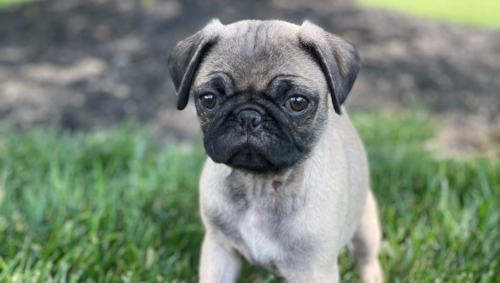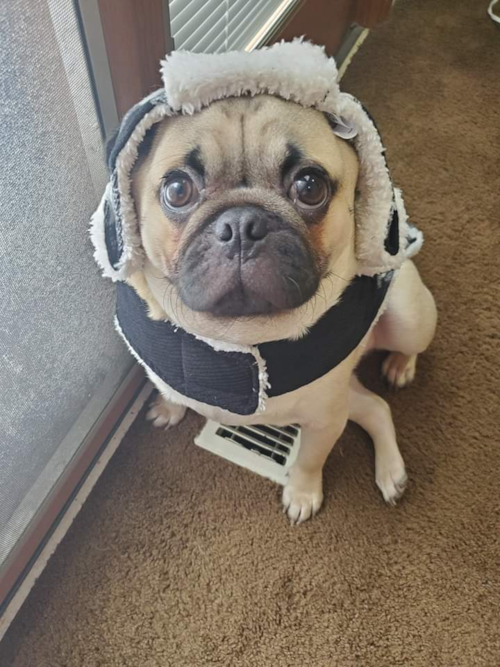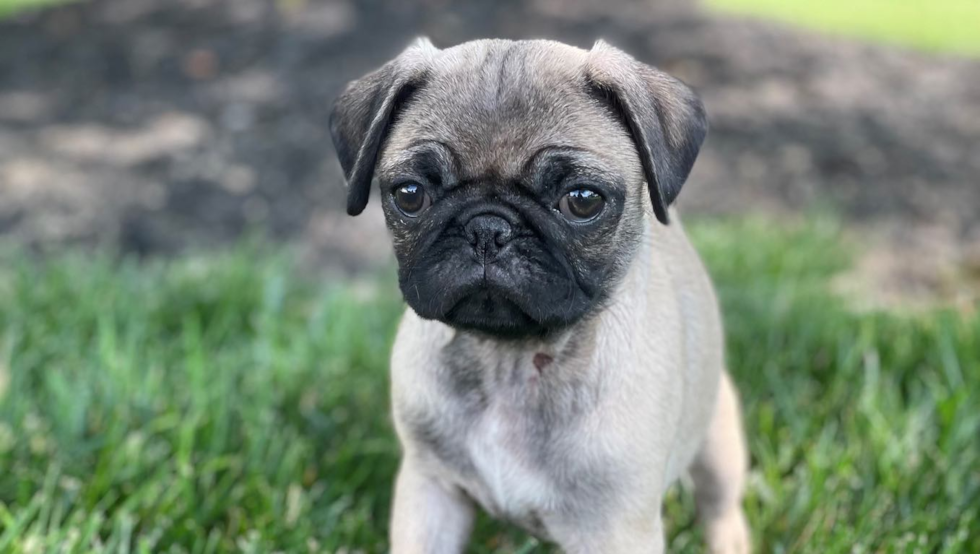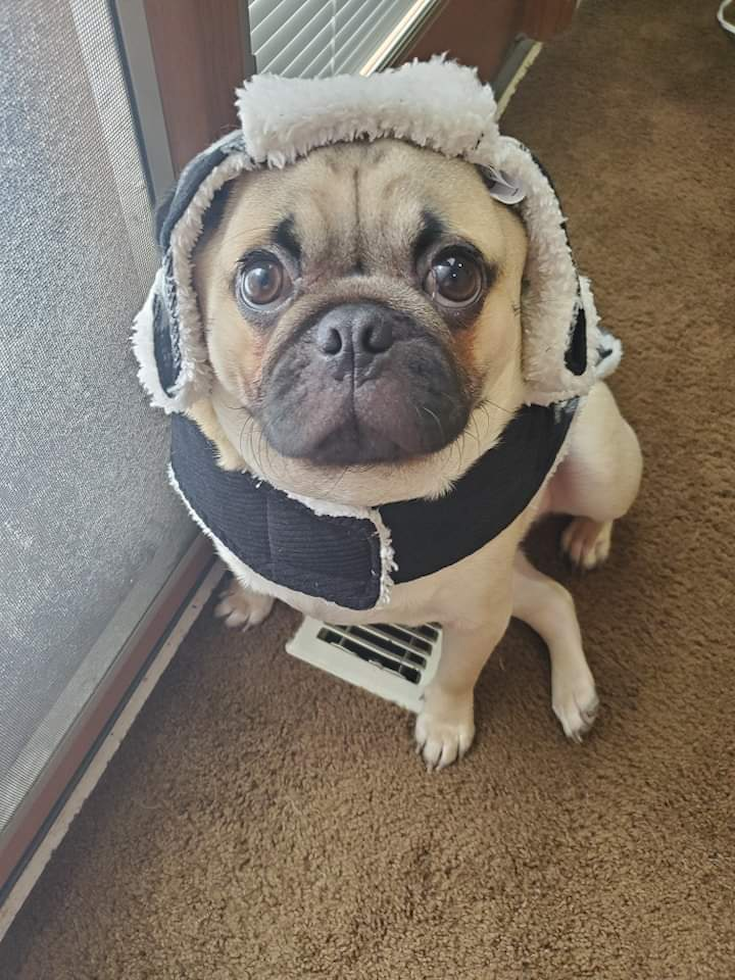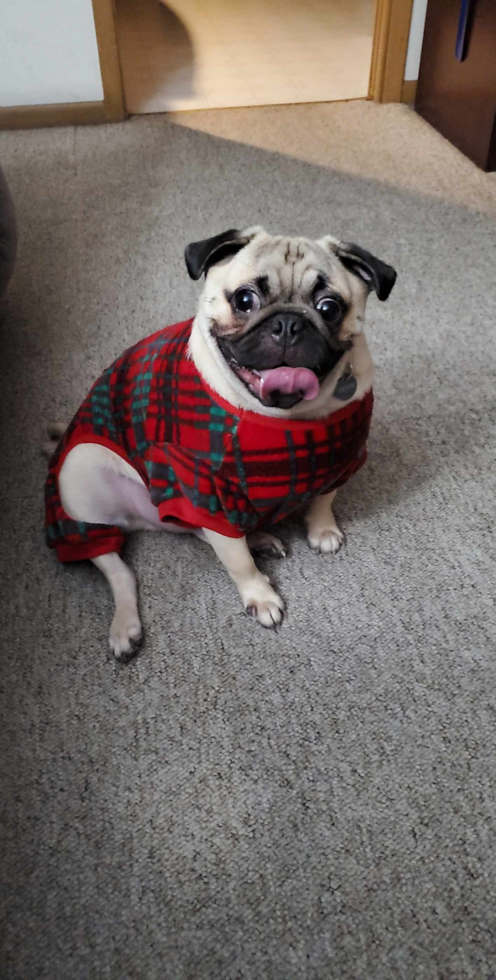Pug Breed Information

Pugs are happy, gentle, and charming little dogs. Their personality is lively, their nature fun-loving, and their disposition affectionate. As even-tempered, sweet, and playful dogs, Pugs make wonderful playmates for kids of all ages and lovely companion pets for couples, singles, and seniors. These little joy bringers love to cuddle and are generous with their Pug love. When it comes to their family, Pugs attach like magnets. They are known to happily shadow their humans in every activity and are just as happy lazing on the couch all day as they are going for a long evening stroll around the neighborhood.
Characteristics
- The Pug breed is a member of the American Kennel Club’s Toy Group since 1885
- Gentle, playful, and docile, Pugs are very fond of children and they make fun playmates
- Pug puppies are tiny, sweet, and bright. They are easy to train and socialize and they make ideal first pets for novice owners
- Highly adaptable and easygoing, the Pug is comfortable in both small city apartments and large family homes
- Pugs are highly sociable and friendly with other dogs, household pets, and strangers
- Quiet yet courageous and vigilant, the Pug is a great watchdog
- Pugs and Pug puppies are goofy and amusing. They like to show off their funny antics and keep everyone entertained
- Easy to groom with low exercise needs, Pugs make excellent companion pets for families with children, couples, singles, and retirees
- Eager to please and fond of their owners, Pug dogs and puppies are easy and fun to train
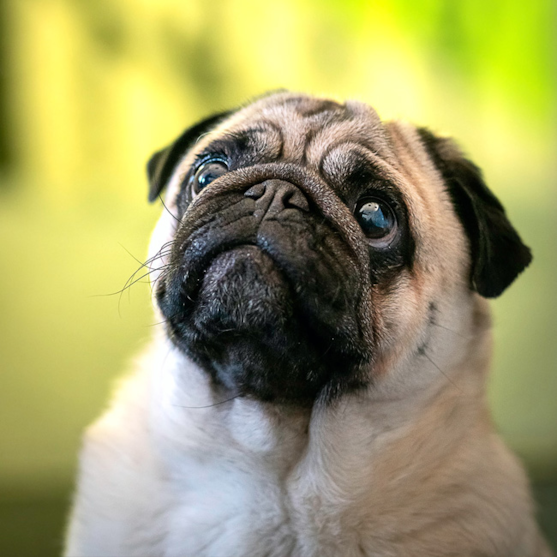
Appearance
Pugs are small, hardy, and friendly-looking dogs. Their step is bouncy and playful and they carry themselves in a proud manner appearing happy and approachable. They have a unique appearance with their short dark muzzle (or mask), facial wrinkles, and short curled tail.
Pugs are sturdy-built muscular dogs. They have big round eyes that are sparkly and dark, rose or button ears, a short thick neck, and short strong legs. The Pug sports a double coat that is short, fine, and glossy, that can be either black or shades of fawn with a black muzzle or mask. Black Pugs, although very popular, are also quite rare.
As members of the Toy Group, Pugs stand at 10 to 11 inches tall and weigh between 14 to 25 pounds, with the female Pug a bit shorter and lighter.
Photos
Temperament
A precious dog that is often referred to as multum in parvo (a lot of dog in a small space), the Pug has a great deal of personality and it is adored for it. Pugs are even-tempered, gentle, and calm dogs that crave attention and are very fond of their pet parents and human siblings. They are hardy and don’t get hurt easily by playing with small children and they are neither jumpy nor aggressive. These dogs are generous in affection and they need the same in return. Many owners have reported that their Pug pets like to follow them everywhere and are always at the ready for a cuddle.
Pugs are creatures of habit. They like to have a set routine and don’t fancy big changes, especially ones that involve them being without their people. They are at their happiest when they are surrounded by their human family, and that’s when they are most eager to show off their goofy tricks and have fun. Some of their favorite activities include pampering, cuddling, naps, belly rubs, and full-body massages. They also enjoy play dates at dog parks, games of fetch, and dog sports like obedience, agility, and rally.
Outgoing, curious, good-mannered, and toy-sized, Pugs are excellent travel companions. They are small enough to carry everywhere and they are more than happy to join their humans at work, shopping, and on vacations.
Training a Pug can be a delightful experience. For more insights on training dogs effectively, check out our blog Easiest Dogs to Train - Top 5 Pups for Effortless Training
Insights
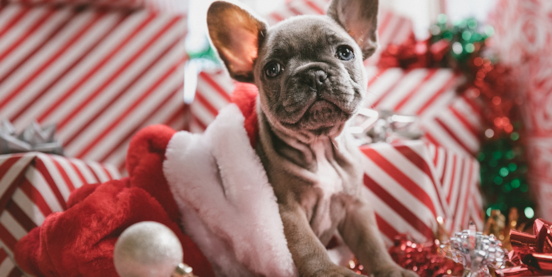
Christmas is just around the corner. It's time to hang the big Christmas socks and stock up on hot cocoa and wine. Bring out the scented candles, the comfy pillows, and the warm puffy blankets, and join in on the wonderful Christmas spirit. Replace your regular coffee mugs with Christmas-themed ones and make sure to update your carol playlist. One more thing. Deck the halls and get a puppy! Don’t forget to...
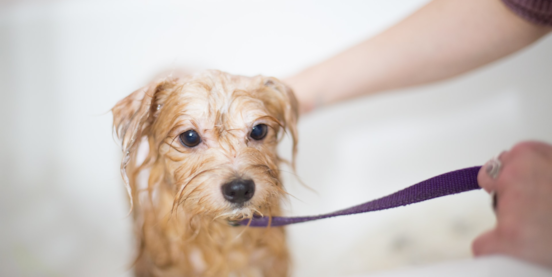
Grooming your Dog at Home Guide
Creating good grooming habits and routines for your dog at home is essential for several reasons and you don’t have to be a professional dog groomer to do it right. By doing regular grooming at home, you can help your dog look its best between visits to the groomer.
You also get to bond more closely and build stronger trust with your dog. Routine grooming sessions will keep your dog clean and feeling fresh, but it will also...
Care
Grooming
Pugs are a low-maintenance breed when it comes to grooming. Although they do shed quite a bit, especially during shedding season, they have a short coat that is not hard to manage. They need to be brushed once every week with a bristle brush or a grooming glove to remove all the fallen hair and bathed once every month or two. Their nails should be trimmed regularly as they are not very active dogs that can wear their nails down naturally.
Pugs are sometimes prone to gum disease and it is recommended to brush their teeth as often as possible, preferably 4 to 5 times a week. The wrinkles on their face and body and their ears should also be checked and wiped frequently.
Pugs should be kept out of the heat during summertime and dressed appropriately (with a doggy jacket or canine sweater) during winter as their short coat is not sufficient to protect them from extreme temperatures.
Understanding your puppy's dental health is crucial. Learn more about it with our Brushing Puppy Teeth Guide
Exercise Needs
The Pug is a moderately active dog with low exercise needs. Because they are small dogs and have a short muzzle, Pugs aren’t built to take on long hikes or any kind of intense activity. They do best with a short walk or two every day, preferably during cool temperatures as they are prone to overheating. Apart from their daily walks, they should have some interactive playtime indoors as well.
Wondering when it's safe for your puppy to go outside and play? Check out our guide on When Can Puppies Go Outside
Health
Although considered low maintenance when it comes to caring for them, Pugs do have a few health problems that are common. These include ear infections, skin allergies, dental issues, and breathing difficulties during extreme weather. Because Pugs love their food with a passion, they can also be prone to obesity. These dogs should not be over exercised or over fed.
Lifespan
Pug dogs have a normal lifespan of 12 to 15 years. Providing them with a well-balanced lifestyle can increase their life expectancy by several years. There have been numerous Pug dogs that have lived well over their 15 years life expectancy. Snookie the Pug lived to the amazing age of 27 years old. He was one of the oldest dogs to have lived.
Training
Pug puppies are bright, bouncy, playful, and easy to train. They are excellent students when it comes to learning as they are naturally obedient dogs who pick up on tricks quite easily. They enjoy learning tricks that they can show off with and they are fantastic learners when it comes to basic commands. Pugs can also be trained for dog sports like obedience, agility, and rally.
Generally, when dogs are overly spoiled, they develop what is called “small dog syndrome”, which in the case of the cute Pugs (and Pug puppies), happens often. Dogs that develop small dog syndrome tend to be difficult to train as they become stubborn and easily bored.
Pug puppies should be trained with patience, a gentle approach as they are a sensitive breed, positive reinforcement, and rewards. They should never be yelled at or treated in a harsh manner as they will close up and become shy or even scared. Vet-approved treats should be used with moderation when training Pug puppies as they are prone to obesity.
As family-attached dogs, Pugs don’t fancy being left alone and might suffer from separation anxiety. It is recommended to start training them during early puppyhood to be comfortable when they are home alone. Leaving them alone for short periods of time at first and then increasing that time gradually will work best with Pug puppies. The baby Pug does best with an owner that is home for most of the time.
History
Pugs are the little wrinkly sweethearts of dogdom and one of the most ancient breeds of dogs. They have been around for at least 2000 years and in that time they have been adoringly represented in art, sculptures, and literature, and even entered history as heroes. For over two millennia, the remarkable Pugs have never seen their popularity drop.
Originally from Ancient China, these lovely dogs were the favored companion pets of Emperors and Empresses in the Chinese Dynasties. During ancient times, Pugs lived luxurious lives at Imperial courts where they were often dressed in the most fashionable garments, slept in the most luxurious chambers, and many claim that they even had personal guards and servants. It is also widely believed that Pugs could only be owned by royalty and the very rich as they were very hard to come by and could only be received as a regal gift of the highest order. Having originated in China, these small dogs as well as other breeds that originated during ancient times could only be afforded by the rich. Keeping and caring for a dog that served no other purpose other than companionship was not something people could afford back then.
Apart from their great popularity in the Chinese Empire, Pugs were also the favorite pets of Tibetan monks and European royalty. They traveled from China to Europe during the 16th century alongside Dutch traders who referred to them as Mopshond. In Holland, Pugs became the official dog of The House of Orange after a Pug saved the soon-to-be-king from foreign invaders by alerting to their presence. Queen Victoria was also a great fan of the breed, owning quite a few Pugs herself.
The Pug dogs were officially recognized by the American Kennel Club in 1885 and in 1931 the Pug Dog Club of America was founded.
Pug dogs are also the parent breed to several mixed breeds. The most popular Pug mix is the Frug, a French Bulldog Pug mix. Other mixes are the Chug – Chihuahua Pug mix and the Pugapoo – Pug Poodle mix.


